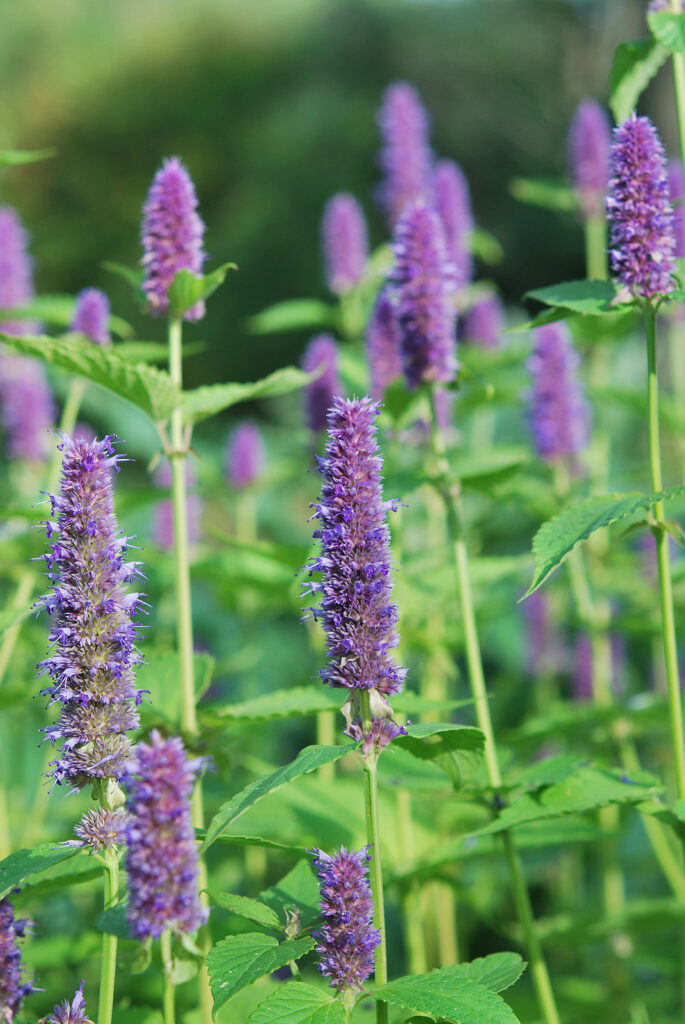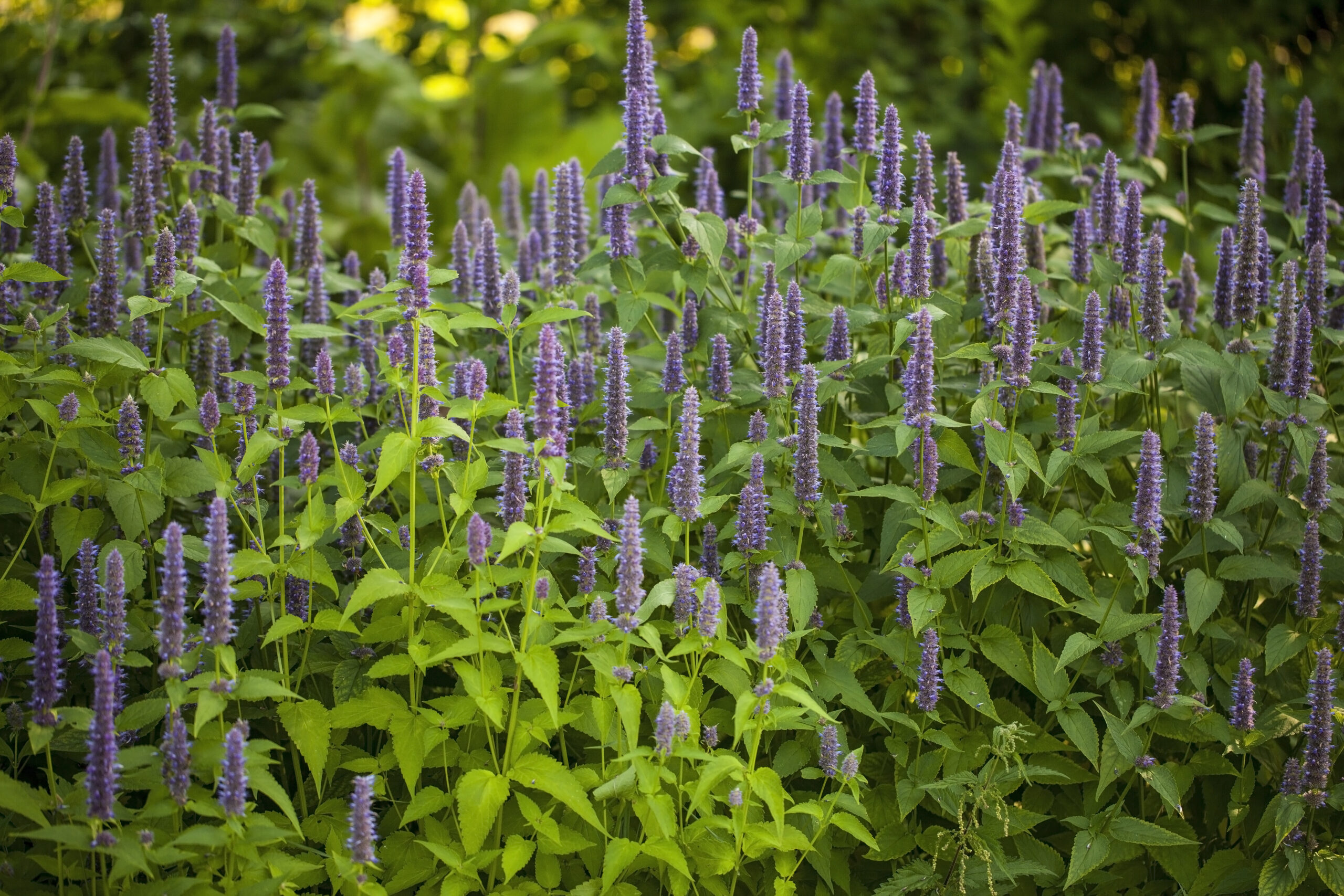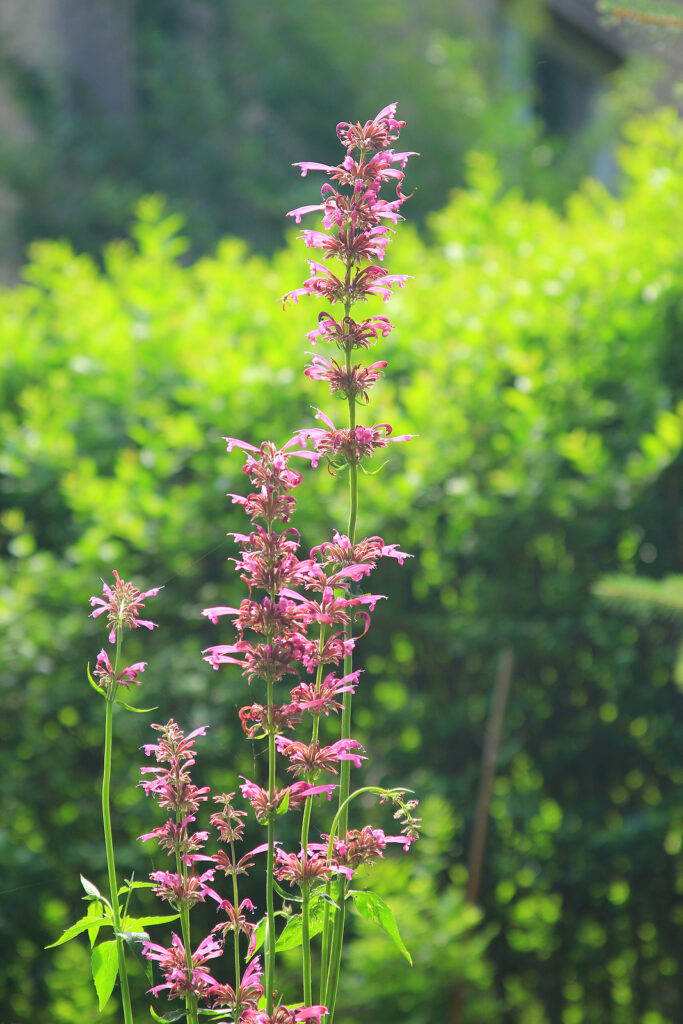Hyssop, Agastache, is an erect perennial with fragrant foliage and mauve and light pink or purplish flower spikes. It is a good choice for mixed borders and cottage gardens, and it attracts butterflies and bees to the garden.
Agastache is native to North America and parts of Asian. Like other members of the Mint family, it has 4-sided stems and opposite leaves.
Two-lipped, tubular flowers appear whorled on spikes from midsummer to autumn. Agastache flowers are long-lasting and make good cut flowers.
Agastache can be a bit coarse–almost weedy–in form for a border, but it can be showy in a wild garden.

Get to know Agastache
- Plant type: Annual (Zones 2-5) or perennial (Zones 6-11)
- Growing Zones and range: 2-11. Plants grow through winter in Zones 6 to 11. Grow Agastache as an annual in zone 2 to 5.
- Hardiness: tender to hardy depending on zone
- Height and width: 1½ to 5 feet tall (1-1.5m); 1 to 3 (1m) feet wide.
- Form: Four-sided stems and opposite leaves characteristic of the mint family; can be somewhat weedy and coarse
- Foliage: Ovate grayish-greem aromatic leaves
- Flower form and color: Whorls of two-lipped flowers in yellow, mauve, light pink, blue, or faded purple form spikelike clusters.
- Bloom time: Midsummer to autumn; flowers are orange, apricot, red, purple, pink, blue, and white.
- Uses: Herb garden, mixed border; good for cutting and containers; attracts butterflies.
- Garden companions: Plant hyssop with purple coneflower, bee balm, and speedwell.
- Common name: Hyssop
- Botanical name: Agastache spp.
- Family: Lamiaceae
- Origin: China, Japan, United States
Where to plant Agastache
- Plant hyssop in full sun.
- Hyssop grows well in average, well-drained soil with moderate water. Hyssop dislikes wet soil. Plants are drought tolerant.
When to plant Agastache
- Plant hyssop in spring in Zones 2-5; plant in spring or fall in Zones 6-11.
- Start seed outdoors after last frost.
- Divide established plants in spring as needed.

Planting and spacing Agastache
- Add aged compost or commercial organic planting mix to planting beds ahead of plants.
- Set hyssop plants 15 to 30 inches (38-76cm) apart.
- Sow seed 1/8 inch deep.
How to water and feed Agastache
- Fertilize hyssop lightly with an all-purpose organic fertilizer.
- Divide hyssop in spring as needed.
Agastache care
- Hyssop is prone to mildew, rust, downy mildew, and other fungal leaf diseases.
Agastache pests and diseases
- Mildew and rust affect leaves in dry summer months.
- Downy mildew and other fungal leaf diseases may occur.
Agastache propagation
- Sow seed in warm soil in early spring.
- Divide established plants in spring.
- Root semi-ripe cuttings in late summer.

Agastache varieties to grow
- Agastache barberi: woody perennial grows to 2 feet tall; leaves and reddish-purple flowers on 12-inch spikes; cultivar ‘Firebird’ has copper-orange flowers. ‘Tutti Fruitti’ is purple.
- A. foeniculum, anise hyssop: clumping perennial can grow to 5 feet tall; has bluish-purple flowers that smell like anise.
- A. mexicana: leaves and rose-pink flowers on 12-inch spikes; ‘Champagne’ cultivar has apricot flowers.



